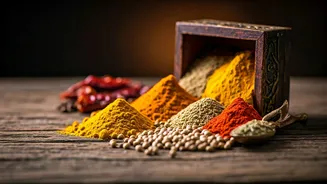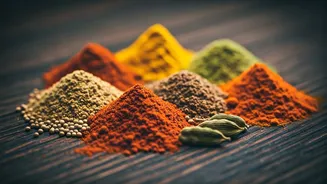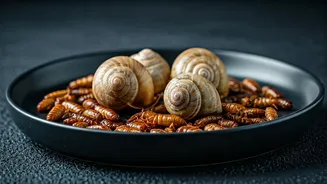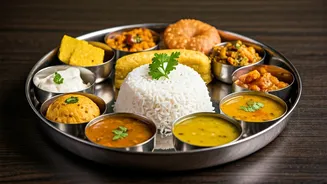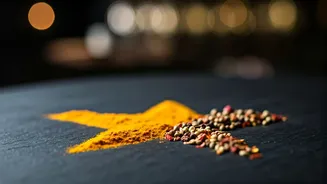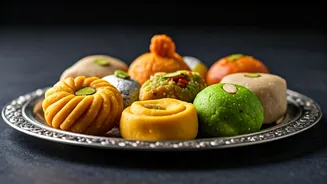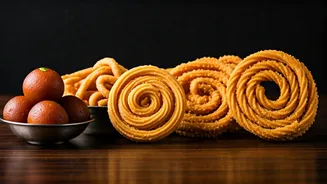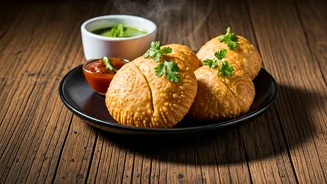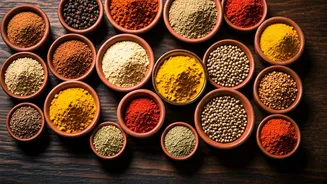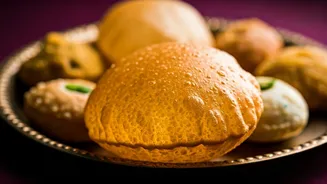Ancient Culinary Roots
The origins of Indian cuisine are deeply intertwined with the history and culture of the Indian subcontinent. The earliest evidence of food preparation
dates back thousands of years, with the Indus Valley Civilization showcasing early agricultural practices and the use of spices. Over centuries, various empires, invasions, and trade routes influenced the culinary landscape, introducing new ingredients, cooking techniques, and flavors. Spices like turmeric, cardamom, and cumin, integral to Indian cooking, were initially used for medicinal purposes before being incorporated into food. The Vedic period, considered a foundational era, saw the development of dietary principles and the importance of food in religious ceremonies. This long and complex history contributed to the rich tapestry of flavors and traditions that define Indian food today, making it a true reflection of the nation's diverse heritage.
Regional Flavor Diversity
One of the most remarkable aspects of Indian cuisine is its regional diversity. Each region boasts its unique cooking style, ingredients, and flavor profiles. In the north, rich, creamy curries, often meat-based, are prevalent, reflecting the influence of Mughal rule. Dishes like butter chicken and rogan josh are staples. Moving south, coconut, rice, and lentils dominate, with a focus on vegetarian options. South Indian cuisine is known for its use of spices, such as mustard seeds, curry leaves, and tamarind. East Indian cuisine features seafood and Bengali sweets, with a preference for lighter flavors. West Indian cuisine is influenced by the coastal regions, with seafood and Gujarati thalis being common. This regional variety isn't just about taste; it is about how the climate, local produce, and historical influences have shaped the way people eat. This diversity ensures that Indian cuisine offers an endless array of flavors for every palate.
Spice Symphony Unveiled
Spices are at the heart of Indian cuisine, contributing depth, complexity, and distinct aromas to dishes. Each spice plays a vital role, often used in combinations to create unique flavor profiles. Turmeric is not only a coloring agent but also offers anti-inflammatory benefits. Chili peppers add heat, while coriander seeds impart a citrusy note. Cumin provides warmth and earthiness, and cardamom introduces a sweet, aromatic flavor. The art of using spices involves understanding their individual characteristics and how they interact when combined. For example, garam masala, a blend of roasted ground spices, often includes cinnamon, cloves, and black pepper. The use of spices isn't just about taste; it is about balance, layering flavors, and creating a harmonious culinary experience. The skill with spices distinguishes Indian cooking, making each dish an adventure.
Cooking Methods Explained
Indian cooking methods are as varied as the regions and dishes themselves, each contributing a unique character to the final product. Tandoor cooking, a traditional technique, involves cooking food in a clay oven, imparting a smoky flavor. Grilling and frying are also common, with methods varying from simple pan-frying to deep-frying. Slow cooking, used for dishes like curries and stews, allows flavors to meld and deepen over time. The use of a mortar and pestle for grinding spices and the practice of tempering, where spices are heated in oil to release their flavors, are key techniques. The preparation of various dishes often involves specific techniques, like the layering of flavors in biryanis or the precise balance of spices in a masala. The cooking methods used in India are both practical and symbolic, demonstrating the attention to detail and skill that goes into creating each dish. The approach is a blend of tradition and innovation.
Food's Cultural Significance
Food in India holds deep cultural and spiritual significance. It is not merely sustenance but a way to express hospitality, celebrate festivals, and honor traditions. Meals are often a communal affair, where families and communities gather to share food. Specific dishes are associated with particular celebrations and religious ceremonies. For example, sweets are often served during festivals, while specific vegetarian dishes may be prepared during religious observances. Food preparation and consumption are often guided by principles of purity and respect. The sharing of food is seen as a gesture of kindness and social harmony. Food plays a vital role in Indian weddings, with elaborate feasts marking significant events. The way food is viewed in India reflects the country's rich cultural tapestry, where eating is a shared experience interwoven with religious beliefs, social customs, and family ties.
